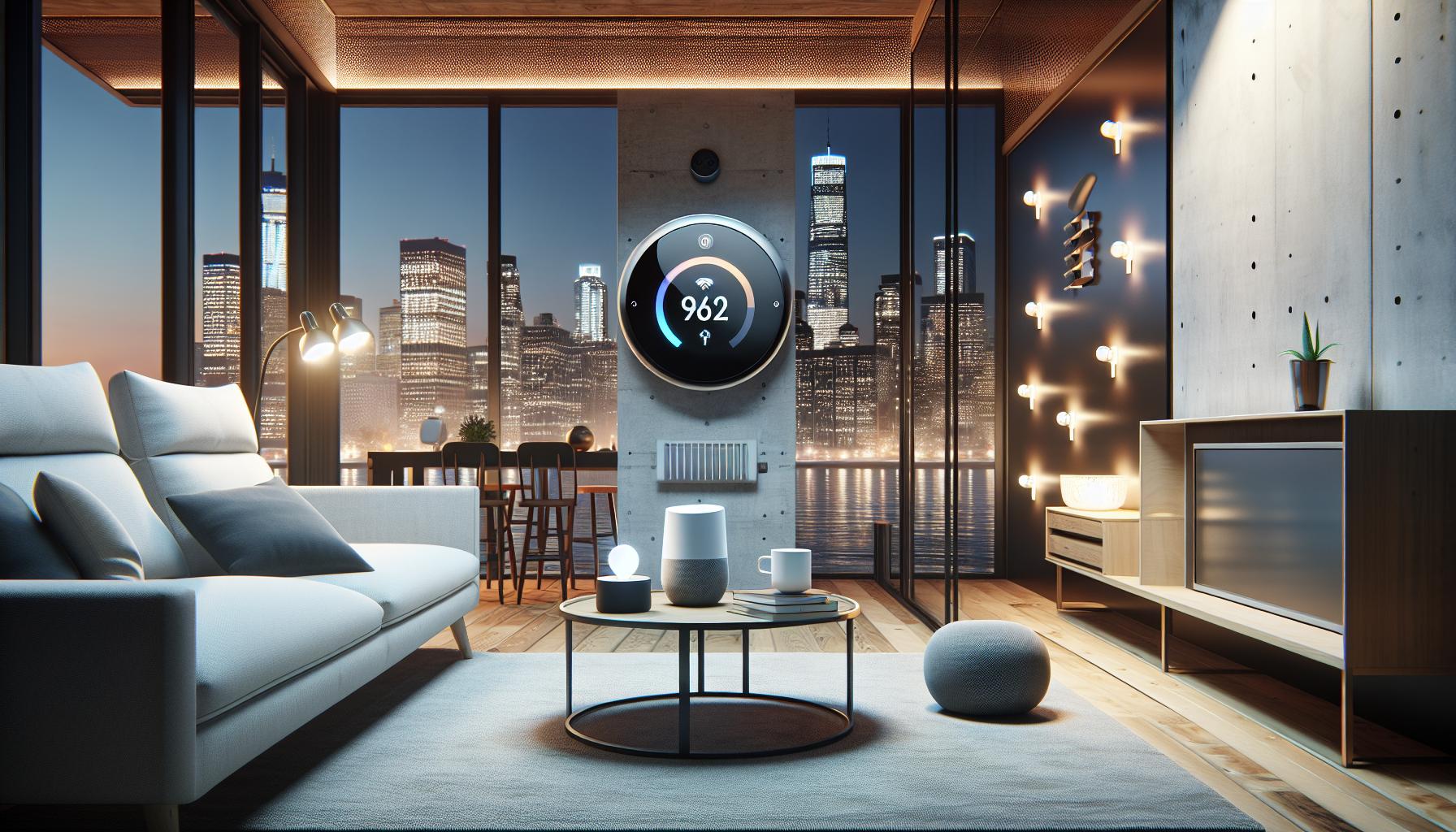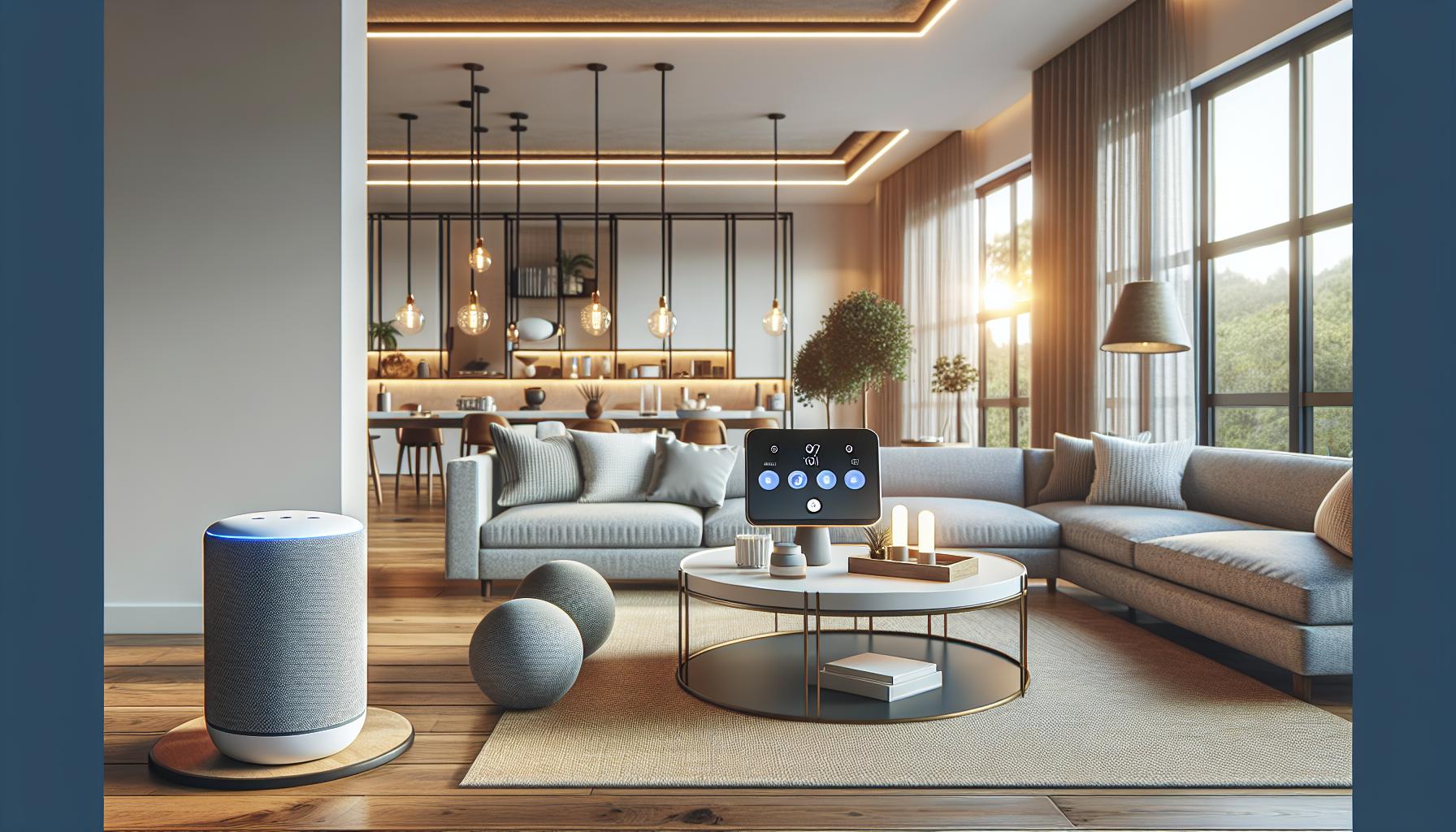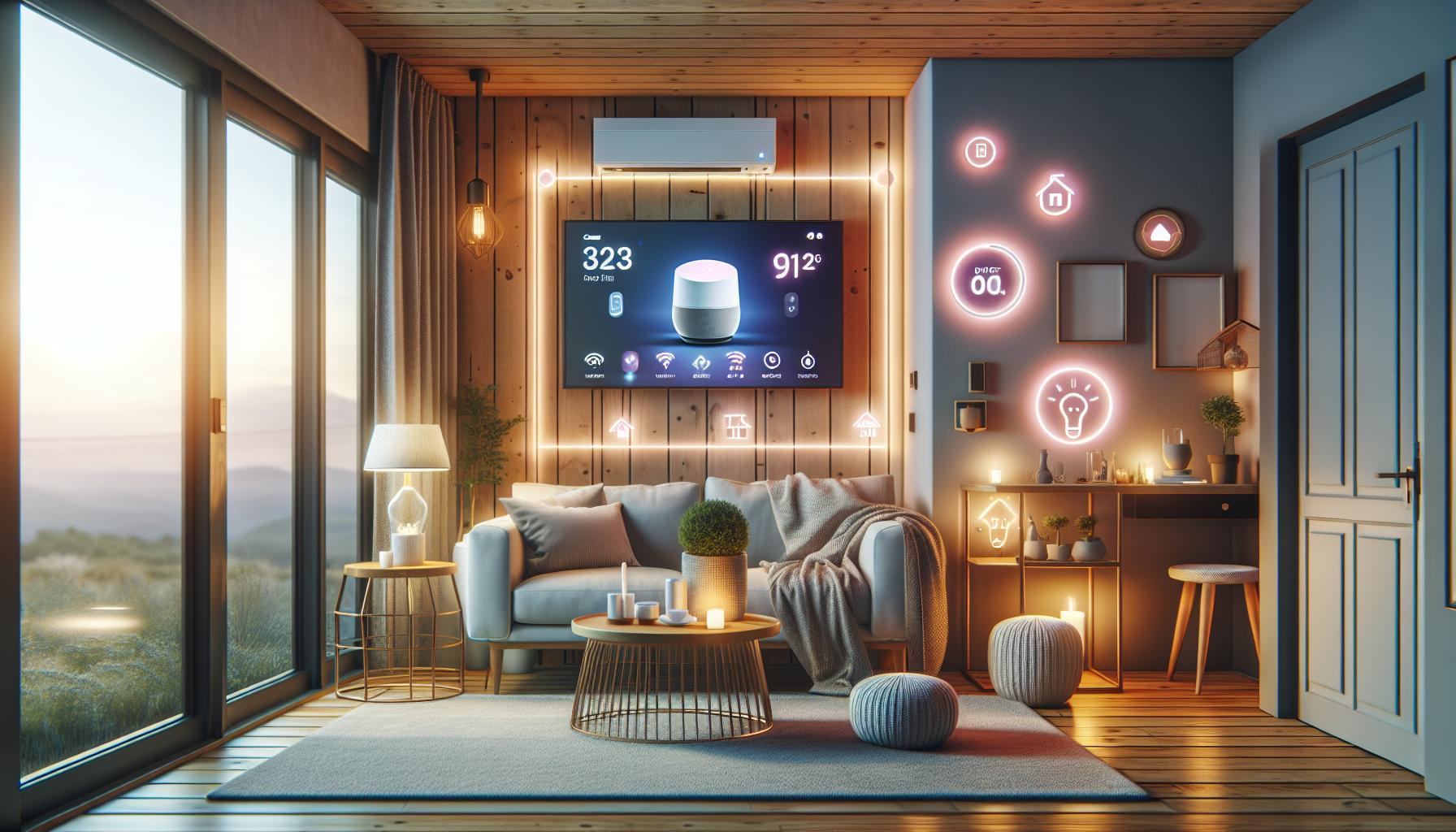Key Takeaways
- Smart Home Devices Enhance Lifestyle: These devices improve convenience, security, and energy efficiency, making daily life easier and more enjoyable.
- Diverse Categories Available: Smart home technology encompasses various categories, including security devices, lighting solutions, climate control, home entertainment, and smart appliances.
- Security First: Tools like smart cameras, doorbell systems, and locks offer enhanced safety features and remote monitoring capabilities for peace of mind.
- Energy Efficiency Matters: Smart thermostats and lighting systems optimize energy use, leading to significant savings on utility bills while minimizing environmental impact.
- Integration is Key: Choosing compatible devices that work seamlessly with existing systems and smart home hubs is essential for a smooth user experience.
- User-Friendly Experience: Prioritize devices that offer intuitive interfaces, reliable customer support, and robust security features to ensure satisfaction and protect data privacy.
In today’s fast-paced world, smart home devices are transforming the way people live. These innovative gadgets not only enhance convenience but also boost security and energy efficiency. From voice-activated assistants to intelligent lighting systems, the possibilities are endless.
As technology continues to evolve, homeowners are looking for ways to integrate smart solutions into their daily routines. Whether it’s managing home appliances remotely or creating a more comfortable living environment, smart home devices offer practical ideas that cater to modern lifestyles. Discovering the right devices can turn any house into a futuristic haven, making everyday tasks easier and more enjoyable.
Smart Home Device Ideas
Smart home devices enhance convenience and security while optimizing energy efficiency. A variety of categories exist, allowing homeowners to personalize their smart living experiences.
Security Devices
- Smart Cameras: Offer real-time video surveillance, enabling remote monitoring.
- Smart Doorbells: Provide two-way audio and video, allowing communication from anywhere.
- Smart Locks: Grant keyless entry and remote locking capabilities for increased safety.
Lighting Solutions
- Smart Bulbs: Allow for custom brightness and color settings, controllable via apps or voice.
- Smart Sensors: Detect motion and adjust lighting automatically for energy savings.
- Smart Switches: Enable remote control of existing light fixtures for added convenience.
Climate Control
- Smart Thermostats: Learn user preferences to control heating and cooling efficiently.
- Smart Air Purifiers: Monitor air quality and adjust purification levels for healthier environments.
- Smart Humidity Sensors: Regulate moisture levels, preventing mold and optimizing comfort.
Home Entertainment
- Smart Speakers: Provide voice control for music streaming and smart home integration.
- Smart TVs: Enable streaming services and voice commands for an enhanced viewing experience.
- Streaming Devices: Allow access to various platforms, streamlining content consumption.
Kitchen Appliances
- Smart Refrigerators: Track food inventory and manage grocery lists, reducing waste.
- Smart Ovens: Offer remote access and precise temperature control for cooking at a distance.
- Smart Coffee Makers: Brew coffee automatically and sync with schedules for fresh servings.
- Smart Fitness Trackers: Monitor health metrics and synchronize with smart devices for insights.
- Smart Sleep Monitors: Analyze sleep patterns and suggest improvements for better rest.
- Smart Medication Reminders: Notify users to take medications at scheduled times, promoting health adherence.
Integrating these smart home devices can significantly enhance daily routines, creating a more efficient and enjoyable living environment.
Types of Smart Home Devices

Smart home devices fall into various categories, each offering specific features that enhance daily living. These categories include security devices, lighting solutions, HVAC systems, and smart appliances.
Security Devices
Security devices provide peace of mind through enhanced monitoring and safety features. Examples include smart cameras, which allow remote viewing and alerts via mobile applications, and smart doorbells that offer two-way communication. Smart locks provide keyless entry and can be controlled from anywhere, while motion sensors detect unusual activity and send notifications.
Lighting Solutions
Lighting solutions improve energy efficiency and ambiance within a home. Smart bulbs can be programmed for different colors and dimness levels based on time of day or activity, helping save energy. Sensors automatically adjust lighting based on occupancy, ensuring lights turn off when no one is in the room. Smart switches allow control of multiple lights with a single command, enhancing convenience.
HVAC Systems
HVAC systems contribute to a comfortable living environment and effective energy management. Smart thermostats learn user preferences and adjust temperatures accordingly, optimizing energy use. Air purifiers equipped with smart technology can monitor air quality and provide data on pollutant levels. Smart vents regulate airflow in different rooms to maintain balanced temperatures throughout the home.
Smart Appliances
Smart appliances streamline household tasks and improve efficiency in the kitchen. Smart refrigerators can track inventory, suggest recipes, and notify users when groceries require replenishing. Smart ovens offer remote control capabilities, allowing users to preheat or adjust settings from a smartphone. Other devices, like dishwashers and washing machines, come with smart features that enable monitoring and scheduling cycles for maximum convenience.
Benefits of Smart Home Devices

Smart home devices offer numerous advantages that enhance daily living. These benefits include increased convenience and automation, improved energy efficiency, and heightened security.
Convenience and Automation
Smart home devices streamline daily tasks through automation. Smart speakers allow voice control of various functions, while programmable lighting enhances adaptability to user schedules. Smart appliances such as ovens and refrigerators enable remote monitoring and operation, simplifying meal preparation and inventory management. Integration with mobile apps centralizes control, making it easy to manage multiple devices from one location.
Energy Efficiency
Smart home devices significantly reduce energy consumption. Smart thermostats adjust heating and cooling based on occupancy patterns, optimizing energy use and lowering utility bills. Smart lighting systems utilize sensors to automatically turn lights on or off, reducing waste. Additionally, energy monitoring devices provide insights into usage patterns, empowering homeowners to make informed decisions regarding their energy consumption.
Enhanced Security
Smart home devices bolster security measures effectively. Smart cameras and doorbells offer real-time video feeds, allowing homeowners to monitor their property from anywhere. Smart locks provide remote access control, making it possible to grant entry to visitors without physical keys. Alerts from motion detectors and smart surveillance systems help ensure prompt responses to potential threats, delivering peace of mind.
Considerations When Choosing Smart Home Devices

Choosing the right smart home devices involves evaluating several crucial factors. Homeowners must focus on compatibility, budget, and user experience to ensure a seamless integration into their lifestyle.
Compatibility and Integration
Compatibility with existing systems ranks high among selection criteria. Devices must connect easily to existing home networks, such as Wi-Fi or Zigbee. Ensure devices are compatible with smart home hubs, like Amazon Echo or Google Home, for centralized control. Checking compatibility with voice assistants can enhance user experience. Research product reviews and compatibility lists to confirm successful integration before purchase.
Budget and Cost
Budget considerations play a significant role in device selection. Prices for smart home devices vary widely, from $20 smart bulbs to $300 smart thermostats. Establishing a budget aids in narrowing down options without overspending. Factor in the long-term savings devices can provide by reducing energy consumption. Investigating manufacturer warranties and potential installation costs also contributes to informed budgeting decisions.
User Experience
User experience remains a vital aspect when selecting smart devices. Devices should offer user-friendly interfaces for easy setup and operation. Look for applications with intuitive navigation and responsive functionality. Evaluate the availability of customer support and online resources for troubleshooting. Prioritize devices with robust security features to ensure data privacy and protection against hacking threats, enhancing overall user satisfaction.
Embracing Smart Home Devices
Embracing smart home devices can revolutionize everyday living. By enhancing convenience and security while promoting energy efficiency, these gadgets offer a modern solution to age-old challenges. Homeowners can enjoy a seamless integration of technology that simplifies tasks and elevates comfort.
Choosing the right devices tailored to individual needs can create a personalized smart home experience. As technology continues to evolve, the potential for innovation in home automation remains vast. With careful consideration of compatibility and user experience, transforming a home into a smart haven is more achievable than ever.